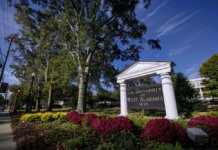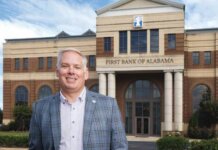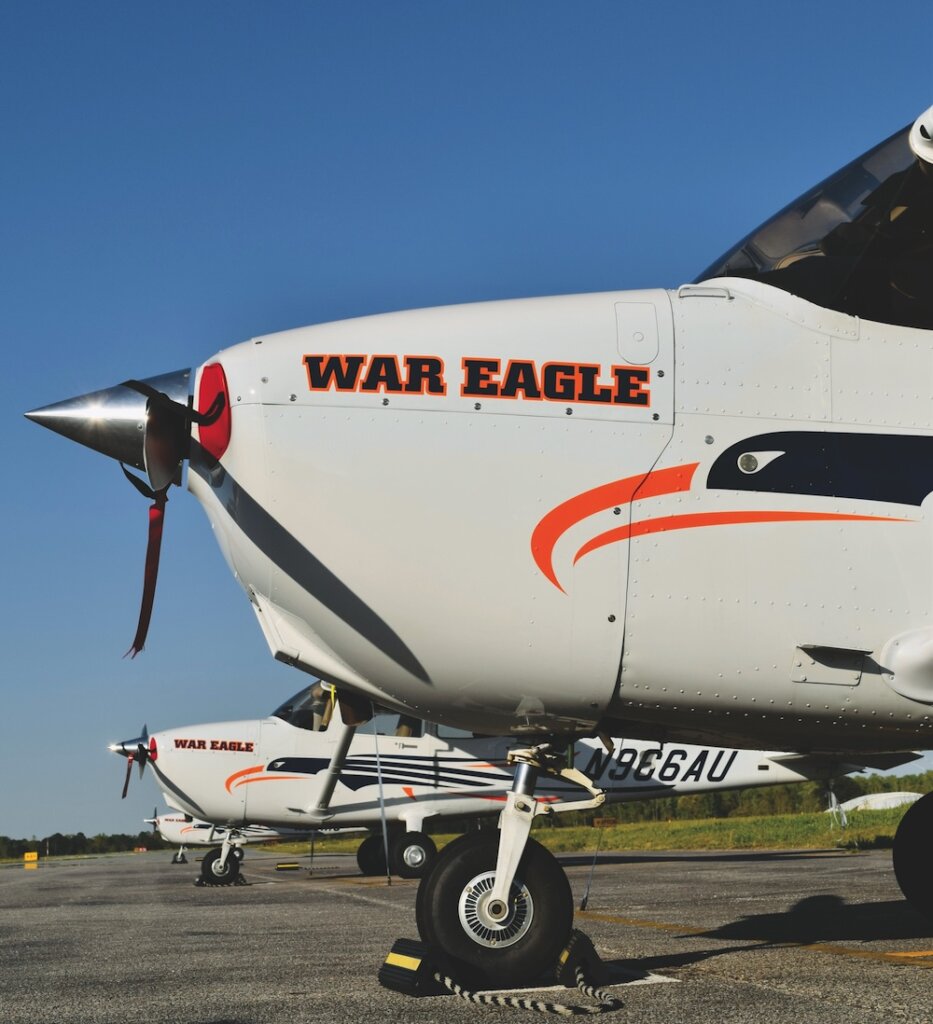
The availability of commercial airline pilots is hitting some significant turbulence. The Federal Aviation Administration requires a mandatory retirement age of 65 for commercial pilots, and the last of the Baby Boomer flyers are reaching that milestone birthday at supersonic speed.
Earlier this year, the Boeing Company released a report stating that an average of approximately 6,000 new pilots will need to be added to the North American workforce annually for the next 20 years to keep up with demand (and more than 32,000 each year globally). The situation is considered to be serious enough that the U.S. Congress recently debated whether to change the mandatory retirement age for pilots to 67.
But when it comes to finding licensed pilots capable of safely transporting the most precious cargo of them all — human passengers — the airlines can’t simply search LinkedIn for “FlyGuy23.” It takes specific training that simply is not widely available.
There are several options in Alabama, however, including through the Auburn University School of Aviation, which offers an FAA-approved Bachelor of Science degree in professional flight, thus giving new meaning to the term “higher education.”
Auburn began providing aviation administration courses as early as the 1920s, but the school’s pilot training program began in earnest in 1941 with the outbreak of World War II. The program evolved over the ensuing decades, eventually moving from the College of Engineering to the College of Liberal Arts in 2017 with the establishment of the professional flight degree.
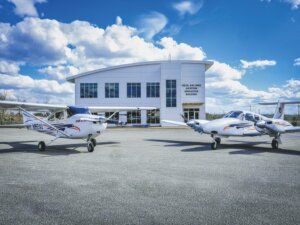
The program accepts approximately 150 new students each year, and “the vast majority of them are coming right out of high school,” according to chief flight instructor Wayne Ceynowa. About half those newcomers do not even have a pilot certification when they arrive on campus, so their initial training simply is learning how to fly.
But even for licensed pilots, including former military members, about one-third of the degree involves spending time in a flight simulator of an airplane cockpit, School of Aviation Director James Birdsong says.
“If you’re getting a chemistry degree, you spend a lot of time in the chemistry lab,” Birdsong says. “A flight degree is similar in the sense that the students spend a lot of time in the flight lab, which is the actual airplane and the simulators.
“The students have to take about 45 hours of core aviation classes that cover things like human factors, weather, aerodynamics, operations management, aviation management. But the rest of the degree is the flight training itself.”
In essence this is a college course similar to any other that Auburn offers, but there is one significant difference. While an architecture or veterinarian student might be able to fail a single test but still end up with a passing grade for the semester, failure of any kind simply is not an option for the professional flight students.
“Every day, our students have either a flight, a simulator or an exam, and they are all graded,” Flight Education Director David Bottomlee says. “If they meet the standard, they pass and move on in the syllabus. If they don’t pass, they have to redo it.
“It’s a difficult program. They have to show up prepared every day, both in the academic portions of what they’re going to do and their flying. If they don’t, they have to repeat it.”
For those who successfully navigate the program, a job opportunity as a commercial pilot almost assuredly awaits. Birdsong says the School of Aviation has partnerships with Delta and several other airlines that enable students to begin the process of applying for a pilot career as early as their junior year.
“The airlines interview our students while they’re still at Auburn, and if they get selected for one of these programs, they’re on a clear path (for a job),” Birdsong says. “It’s a very structured path between Auburn and all these different airlines. So, these students show up here at age 18, and then they’re out the door at 23 and ready to fly for the airlines.”
There are other options within the state for pilot training. Tuskegee University recently reinstated flight training at historic Moton Field for the first time since 1946, in partnership with Republic Airways’ Leadership In Flight Training (LIFT) Academy. This past summer, 20-year-old Isaiah Hand became the first student to earn his pilot’s license through Tuskegee’s new aviation science degree program, and he plans to continue training for a commercial pilot’s license.
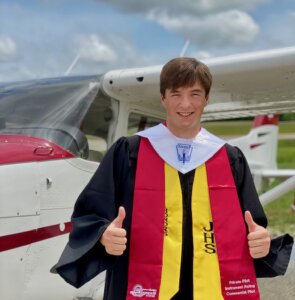
Meanwhile, away from campus, Jasper-based Sanders Aviation offers a professional airline pilot career track. The Sanders Flight Training Center was established in 1996 by Joseph Sanders Jr., a retired U.S. Air Force lieutenant colonel, who wanted to help other military aviators transition into a career with the airlines.
“We see about 1,000 military aviators each year,” says Sanders’ daughter, Jessica Sanders Walker, who serves as the company’s vice president. “We’ve been doing this long enough that we know exactly what they need. So, if we get a C-17 pilot (a heavy-cargo aircraft), we know how to tailor the course specifically for them.”
In general, Walker says the Center’s Certified Training Program consists of 30 hours of academia (covering such topics as meteorology, runway incursions and airfield operations) and 10 hours of simulator time. It is all in preparation for the FAA’s Airline Transport Pilot Multiengine Airplane test, which is a prerequisite for becoming a commercial pilot.
“It’s just like if you’re going to law school and you have to take the LSAT (Law School Admission Test) or med school and take the MCAT (Medical College Admission Test),” Walker says. “We administer a ton of ATM knowledge tests every week.”
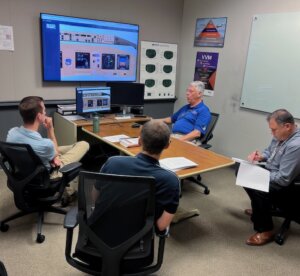
The program has been successful enough that Sanders Aviation has added flight training centers in Tuscaloosa and Huntsville, as well as a location in Memphis utilizing flight simulators through a partnership with FedEx. In addition, the company has started a nonprofit called the Operation Aviation Foundation, designed to promote potential aviation careers to children.
“We need to get these students attracted to this now, because of all the new pilots we’re going to need in the future,” Walker says. “Our goal is to create the most capable pilots possible, and make sure they leave here with the knowledge needed to be successful.”
Expanding the pilot pipeline beyond the military is important because, as Birdsong points out, that supply pool no longer is large enough to meet the growing demand for commercial aviators.
“About 30 years ago, 70% of the commercial pilots came from the military and 30% civilian. Today it’s flipped, with only about 30% from the military,” Birdsong says. “That’s driving some changes. The structured flight environment that pilots used to get from the military, they can now find that same type of structure in these other education programs.”
Cary Estes is a Birmingham-based freelance contributor to Business Alabama.
This article appears in the October 2025 issue of Business Alabama.

